Different Types of Wood For Woodworking 2024
- April 5, 2024
- 0 comment
Discover the Different Types of Wood For Woodworking. Each wood species offers unique characteristics, from the robust strength of oak to the delicate finesse of pine, making your project stand out. Whether you’re crafting heirloom furniture or decorative pieces, understanding the different types of wood is essential. Dive into this guide to uncover the beauty and versatility of woods used in woodworking, and find the perfect match for your next masterpiece.
Difference Between Hardwood and Softwood
The distinction between hardwoods and softwoods is primarily based on the species of trees they are derived from. Softwoods originate from coniferous trees, which are known for bearing cones and needle-like foliage. Common varieties of softwood trees encompass species such as pine, cedar, spruce, redwood, and fir. On the other hand, hardwoods are produced from non-coniferous trees, which are typically deciduous, shedding their leaves annually, and bear seeds. Notable hardwood species include oak, maple, cherry, mahogany, and walnut.
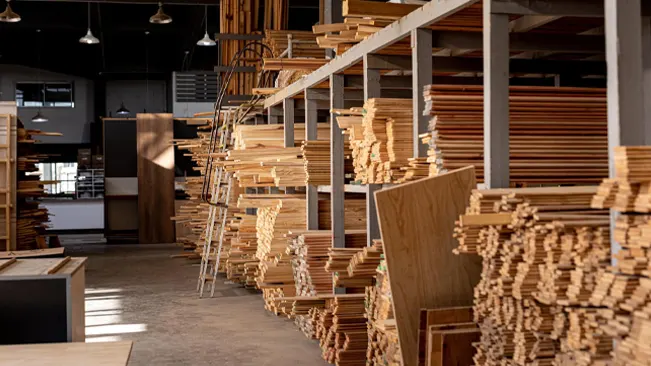
Contrary to what the term “softwood” might imply, it doesn’t necessarily denote the wood’s softness. In fact, several hardwoods are softer than some softwoods. The key difference lies not in the physical hardness but in the botanical classification of the trees. An interesting exception in the categorization includes bamboo and palm. Although these plants are not traditional deciduous trees, they are classified as hardwoods due to their similar characteristics with other hardwoods, despite being monocotyledons, a different botanical group.
Types of Wood For Woodworking
Softwoods
Cedar
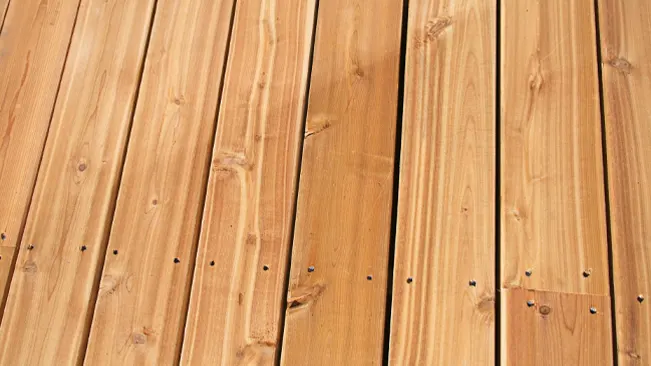
Cedar, particularly Western Red Cedar, is favored for its rich reddish hue and ranks among the softer wood varieties. This type of wood, known for its even grain and pleasant natural aroma, is widely accessible in most home improvement stores at a reasonable cost. The aromatic qualities of cedar are thought to naturally repel moths and other insects, making it a popular choice for crafting storage chests and wardrobes.
Cedar excels in outdoor applications due to its inherent resistance to decay, making it ideal for fences, external cladding, outdoor furniture, and decking. However, the wood’s natural oils and scent may cause irritation for some individuals, so it’s not recommended for items like kitchen tools or items that come into prolonged contact with skin.
Pine
Pine stands out as a versatile softwood, known for its durability, cost-effectiveness, and sustainability. It’s relatively soft, making it easy to work with for carving and crafting. Thanks to the rapid growth of pine trees, this wood is abundantly available for a wide range of projects. Pine varieties exhibit various hues, from pale yellow to creamy white.
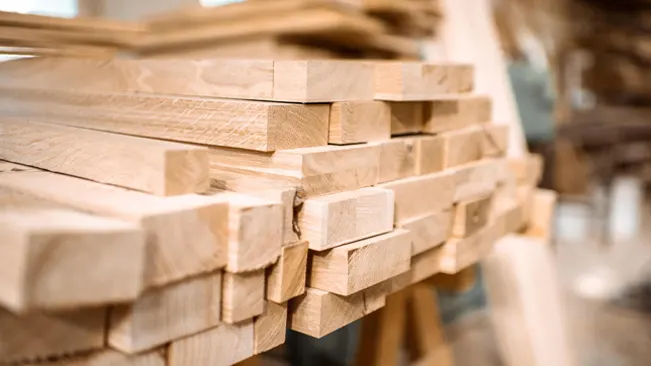
While pine is typically used indoors, it can also be treated for outdoor applications. It accepts stains, paints, and finishes well, making it a prime choice for furniture. Pine is especially suitable for those new to woodworking, thanks to its accessibility and ease of use.
Redwood
Redwood, characterized by its soft texture and distinctive reddish tint, is sourced from the towering redwood trees known for their straight grain. This wood is readily available at most home improvement retailers at a moderate price point and is easily customizable to specific dimensions and shapes.

Redwood’s resistance to moisture makes it an excellent material for exterior projects such as decking, garden edging, and retaining walls. It can also be utilized indoors for crafting cabinetry, tables, and veneers due to its aesthetic appeal.
Fir
Known commonly as Douglas Fir, this wood type presents a reddish-brown coloration and offers affordability and strength. However, its grain pattern is not particularly striking, and it poses challenges when staining. For these reasons, fir is often painted to enhance its appearance.
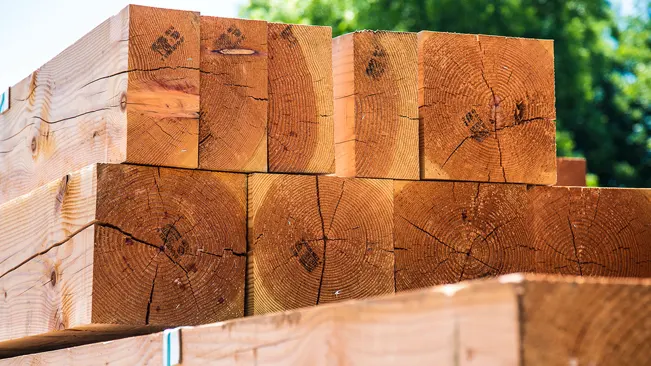
The dense grain structure of fir lends it superior strength compared to many softwoods, making it a go-to choice for construction and utilitarian projects where aesthetic considerations are secondary.
Spruce
Spruce wood is recognized for its pale coloration and understated straight grain, sitting on the softer end of the softwood spectrum. Without special treatment, spruce is not notably resistant to weather conditions and is prone to swelling, thus it is more suited to indoor applications.
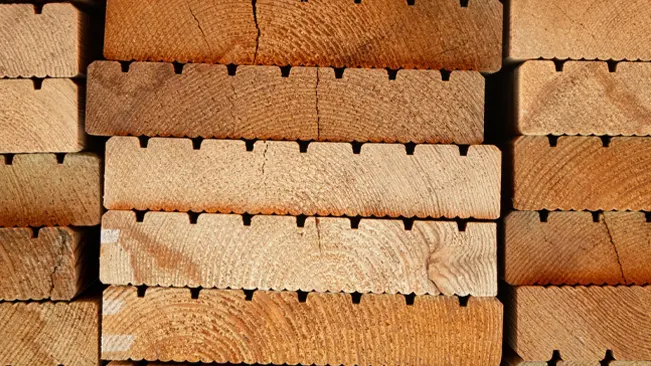
Mature spruce trees, when fully grown, are highly valued for their acoustic properties, making them ideal for manufacturing musical instruments like guitars, pianos, and other stringed instruments. In its lumber form, spruce is commonly employed in framing interior structures and various utility purposes. Lumber from spruce, pine, and fir is collectively referred to as SPF lumber due to their shared characteristics and uses.
Hard Woods
Mahogany
Mahogany is recognized for its warm reddish hues, ranging from a soft brown to a more intense red. This wood, while softer than many hardwoods, boasts an even grain and a moderate texture, making it a favorite for its aesthetic appeal and ease of crafting. Mahogany is often chosen for creating musical instruments such as guitars and pianos due to its rich appearance.

However, Mahogany’s sourcing can be a concern, as it’s not always harvested from managed forests, making it less accessible in standard home improvement stores and more costly. Beginners in woodworking might find other, more readily available and less expensive woods more suitable for practice.
Cherry
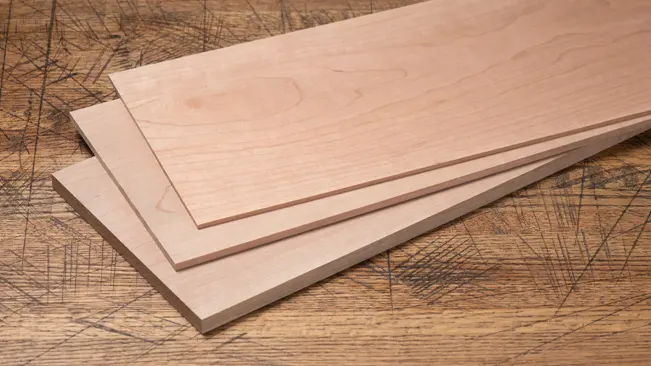
Cherry wood is esteemed for its workability and the ease with which it can be finished or stained. It features a light sapwood and a heartwood with a deeper reddish-brown tone. Cherry’s workability is similar to that of mahogany, making it a sought-after material for architectural woodwork, furniture, and cabinetry. Cherry might be harder to source from regular stores, typically requiring a visit to a lumberyard, and is considered a more premium hardwood due to its high demand.
Oak
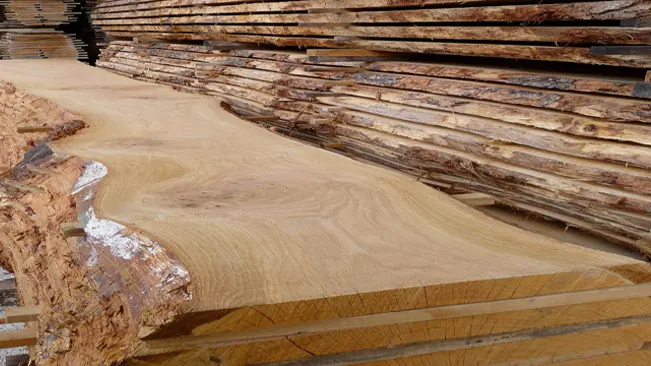
Oak is a durable wood that remains workable for crafting. Available in white and red varieties, white oak is often the choice for furniture making due to its attractive appearance. Red oak is slightly softer and more readily available. Oak’s resistance to decay makes it suitable for outdoor use with proper treatment. Its longevity is ideal for heirloom furniture pieces. Oak’s tendency to shrink and swell with moisture changes necessitates acclimation to your workspace’s environment before use.
Maple
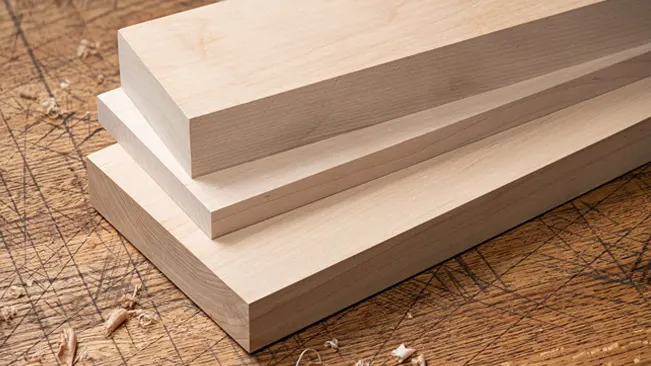
Maple, known for its beauty, is available as hard maple and the more tool-friendly soft maple. Both varieties are harder than many other woods, offering great stability. Hard maple is typically used for flooring due to its durability, while soft maple is preferred for furniture. Maple is not commonly found in home stores, so a lumberyard visit is necessary for purchase.
Poplar

Poplar stands out as one of the easiest hardwoods to work with, thanks to its softness. It’s also more affordable than many hardwoods. Poplar’s appearance is less striking, often featuring a pale base with brown or green streaks. It’s widely used for internal furniture structures or painted furniture due to its less appealing natural look.
Birch
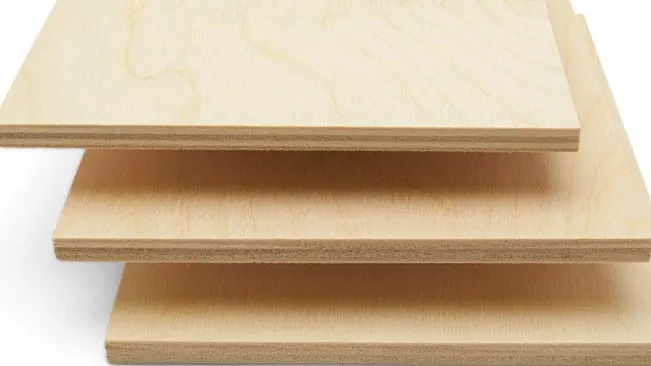
Birch is a robust hardwood, available in yellow and white varieties, with the latter often likened to maple. Both types are stable, strong, and relatively affordable. Birch’s challenge lies in staining, as it can lead to blotchiness, making it better suited for painted projects. It’s widely used in high-end furniture and small wooden items like toys and toothpicks.
Ash

Ash, with its pale tones and straight grain, matches oak in hardness and workability, making it excellent for staining. However, ash is becoming scarcer, making it harder to find in local stores but still reasonably priced at lumberyards. It’s versatile, used in furniture, sports equipment, and curved boat parts.
Walnut
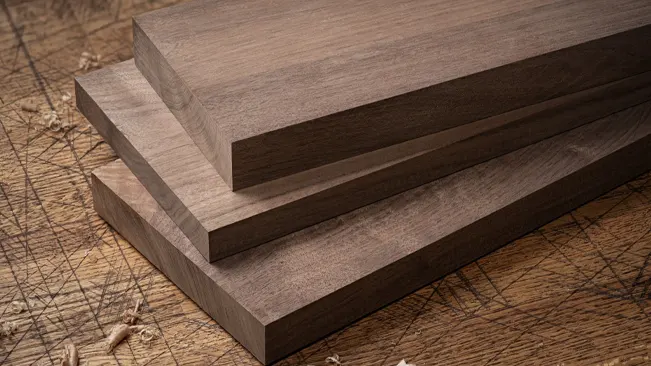
Walnut is prized for its deep, rich color and fine grain, making it an excellent choice for polished finishes and stains. Despite being on the pricier side, its beauty justifies the cost for many. It’s used for detailed inlays, furniture, and musical instruments, offering both visual appeal and durability.
Teak
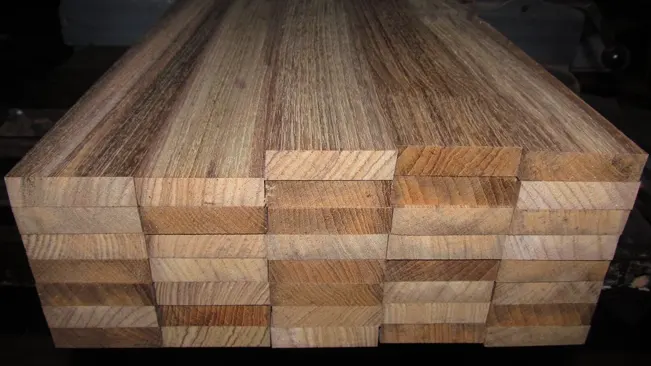
Teak, known for its golden-brown color, falls in the mid-range of hardness, potentially dulling blades more quickly. Its high cost is attributed to its lengthy growth cycle, often leading to its availability only in specialty stores. Teak’s weather resistance makes it ideal for outdoor furniture and traditional boat building, though its natural oils can complicate gluing and staining.
What’s The Best Wood For Beginner Woodworking?
Pine

Pine is often recommended for beginners due to its softness, making it easier to cut and shape. It’s also widely available and very affordable, which is ideal for practicing new techniques without a significant financial investment. Pine has a light color and a grain that can be quite pronounced, allowing beginners to learn about grain direction and how it affects the woodworking process. However, its softness means it can dent easily, so it requires a gentle touch.
Poplar

Poplar is another excellent choice for beginners. It’s slightly harder than pine but still soft enough to work with easily using hand tools or machinery. Poplar is known for its straight grain and greenish hue, although the color can vary. It’s also relatively inexpensive and can be found at most lumber yards or home improvement stores. Poplar is often used for practice projects or parts of furniture that won’t be visible, as it doesn’t have the most attractive appearance when stained.
Cedar
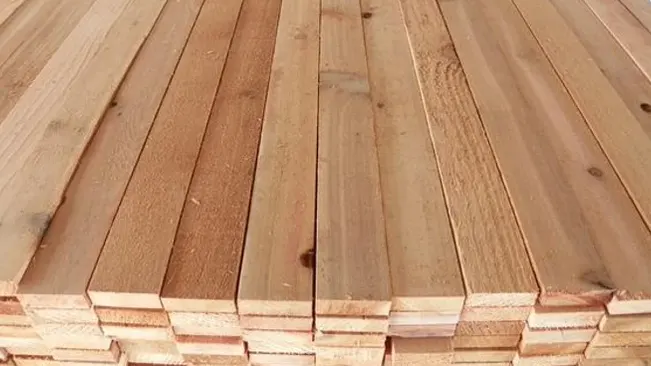
Cedar is a softwood that’s not only easy to work with but also has a pleasant smell and natural resistance to rot and insects, making it suitable for outdoor projects. Its reddish color and straight grain make it visually appealing for a variety of projects. Cedar can be more expensive than pine or poplar, but its durability and resistance to outdoor elements make it a worthwhile investment for projects like outdoor furniture or garden planters.
Birch

Birch is a bit harder than pine and poplar, offering a good middle ground for beginners looking to challenge themselves slightly. It has a fine grain and is available in both yellow and white varieties, with white birch being more widely used for its attractive appearance. Birch plywood is also a great option for beginners, as it’s stable, affordable, and good for practicing cuts and joinery.
Conclusion
In conclusion, the diverse array of wood types available for woodworking offers a rich palette for both novice and experienced woodworkers to craft their projects. From the soft, pliable textures of pine and cedar ideal for beginners, to the rich hues and durability of hardwoods like oak and walnut favored for fine furniture, each type of wood brings its unique properties and challenges to the workbench. Understanding the distinct characteristics, applications, and workability of different woods is essential in choosing the right material for a project, influencing both the process and the final outcome. Whether embarking on a simple DIY project or a complex artisanal piece, the choice of wood can significantly impact the craftsmanship, aesthetic appeal, and longevity of the creation, making the exploration of various wood types a fundamental aspect of the woodworking journey.
Woodworking Tools
FAQs
1. What is the best wood for beginners in woodworking?
Softwoods like pine and cedar are great for beginners due to their affordability and ease of work. Poplar and birch are also good options as they offer a balance between softwood and hardwood characteristics.
2. How do I choose the right wood for my woodworking project?
Consider the project’s purpose, the desired finish, the wood’s durability, and your level of experience. For outdoor projects, choose weather-resistant woods like cedar or teak. For fine furniture, consider hardwoods like oak or walnut.
3. Can I use different types of wood in the same project?
Yes, combining different types of wood can add contrast and visual interest to your project. Just ensure that they have compatible characteristics in terms of expansion and contraction to avoid warping.
4. Why is hardwood typically more expensive than softwood?
Hardwoods are generally slower growing and denser, making them more durable but also scarcer and more labor-intensive to process, which contributes to their higher cost.
5. Is it necessary to treat all wood for outdoor use?
Not all wood needs to be treated for outdoor use, but it’s recommended for woods that aren’t naturally resistant to moisture and decay, like pine. Woods like cedar, redwood, and teak have natural oils that make them more durable outdoors.
6. How can I tell if a piece of wood is good quality?
Look for wood that is straight, without any warps or twists. Check for uniform grain patterns and minimal knots, unless knots are desired for aesthetic reasons. Also, ensure the wood doesn’t have cracks or splits along the edges.
7. Can I mix softwood and hardwood in a project?
Mixing softwood and hardwood can be done, but be mindful of the differences in their physical properties, such as hardness and how they respond to environmental changes, to ensure the integrity of your project.
8. How do I prevent my wood projects from warping over time?
Use properly seasoned wood, maintain consistent humidity levels in the storage and use environment, and apply the correct finishes. Also, consider the wood grain orientation and construction techniques to minimize stress on the wood.

Joel Cunningham
Forestry AuthorI'm Joel Cunningham, an expert in pruning and weed management with over a decade of experience. My skills are rooted in formal training and extensive practice, focusing on advanced pruning techniques and efficient weed control. I'm known for my quality work, precision, and deep understanding of plant health and soil dynamics. My contributions extend to educational initiatives where I share sustainable practices and advice, establishing myself as a reliable and authoritative figure in the gardening community.













Leave your comment